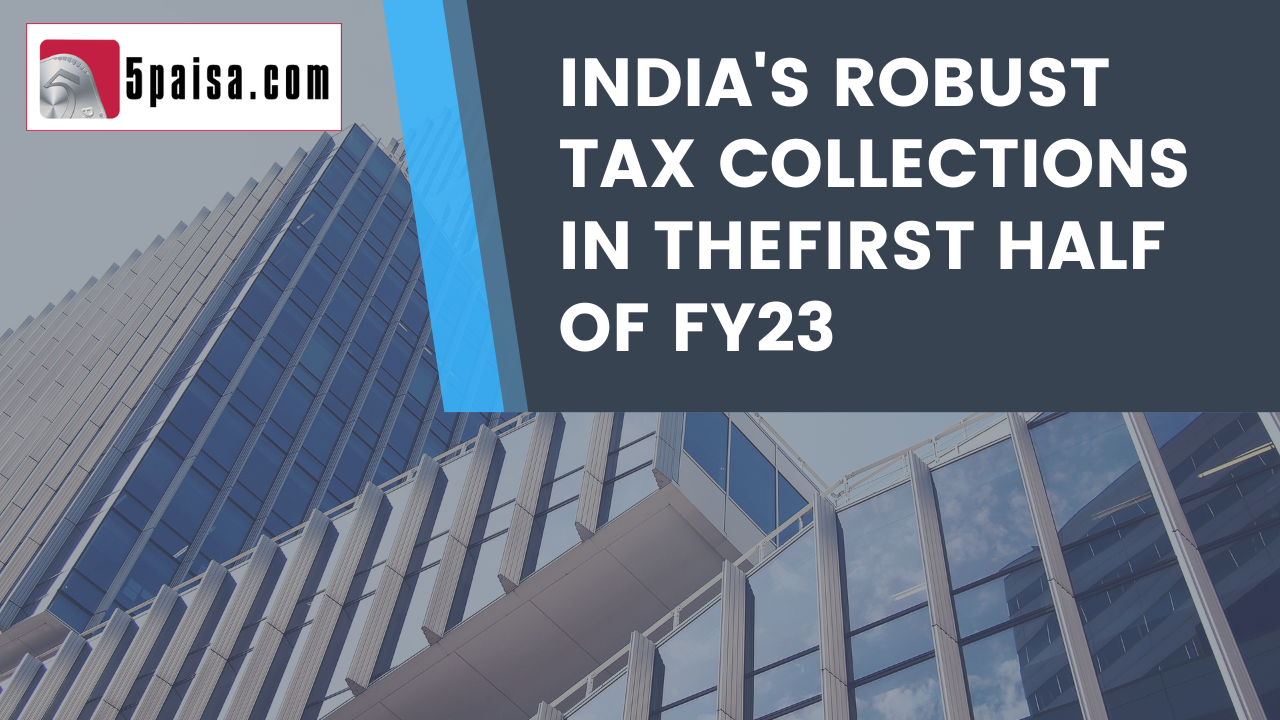Sobha Share Price Dips Amidst ₹865 Crore Equity Trade
India reports robust direct tax flows for H1FY23

Last Updated: 12th December 2022 - 10:53 pm
With strong economic growth still visible and positive cues from high frequency indicators, the direct tax collections were always supposed to be robust. The numbers just bear out that point of view. Within the gamut of direct taxes, gross corporate income-tax (CIT) for the FY23 period up to 08th October, was up 16.73%. On the other hand the surge was much sharper on the personal income taxes front. In fact, total collections of personal income taxes up to 08th October for FY23, was 32.3% higher on a yoy basis. It may be noted that this growth in personal income taxes also includes securities transaction tax (STT) inflows.
If one were to look at overall direct tax revenues, it was up by 23.8% at Rs8.96 trillion compared to the same period last year. There was strong traction in the growth of corporate income taxes and personal income taxes during the first half of the year. While a sharp turnaround in economic activity resulted in robust growth, there were also other reasons for the improved direct tax collections. The CBDT has made adept use of technology to plug loopholes in the tax collection and monitoring system, which reduced leakages. In addition, there has also been perceptible improvement in simplifying tax administration.
Due to the surge of refund pay-outs in the last 2 months, the net direct tax collections (net of refunds paid out), stood at Rs7.45 trillion. This represents a lower yoy growth of 16.3%. What is gratifying is that the net direct tax collections till date accounts for 52.46% of the total budgeted tax collections for the full fiscal year FY23. That opens the doors for a much bigger back-ended boost to tax collections and also reduces the need for borrowings in the second half of the fiscal, as we shall see later. Normally, the second half sees the festival cycle and year end cycle, which automatically leads to robust tax collections.
What has been interesting is that, in the past, the direct tax collections were never published on a monthly basis. This puts more pressure on the income tax department to speed up collections and ensure speedy compliance. Such a transparent disclosure on a monthly basis also gives out the right signals about the financial situation of the government and its balance sheet. While indirect taxes are a barometer of the robustness of the corporate and industrial sector, the direct tax collections is a good index of consumption potential of the economy. This is good news for the consumption driven sectors in India.
The robustness is not just in the area of direct taxes, but also in indirect taxes. For instance, September 2022 saw robust GST collections of Rs1.48 trillion and this marks the third highest ever GST collections since the activity first began in July 2017. These indirect tax collections are also a barometer of the resilience shown by the Indian economy amidst global headwinds like rising inflation, recession fears, hawkishness of the central banks etc. Like in direct taxes, even on the indirect taxes front, the sharp improvement in collections is attributed to better compliance and use of technology; apart from economic growth.
According to experts, this surge in income tax collections can be largely attributed to strong economic recovery. There has been a sharp surge in the demand for skilled professionals in the job market and that has resulted in surge in pay packets, which is also reflected in growing tax collections. One must not forget that the robust performance of the stock markets has also resulted in sharp growth in STT collections, which is also part of direct tax collections. Overall, the cues are positive and indicate that consumption in India would stay robust in the coming quarters.
One of the big merits of such robust tax collections is that inflation is pretty steep at almost 7% on a consistent basis. Hence strong tax collections are kind of imperative for consumption to grow in material terms. But the biggest impact of robust tax collections has been visible in the borrowing numbers for the second half. The total borrowing target for H2FY23 was Rs6.02 trillion, but the government has been able to restrict the borrowings in the second half to Rs5.92 trillion. This lower borrowings of Rs10,000 crore stems from the confidence of the government in reporting robust tax collection numbers.
Disclaimer: Investment/Trading in securities Market is subject to market risk, past performance is not a guarantee of future performance. The risk of loss in trading and investment in Securities markets including Equites and Derivatives can be substantial.
Trending on 5paisa
Discover more of what matters to you.
Indian Market Related Articles
 Tanushree Jaiswal
Tanushree Jaiswal




